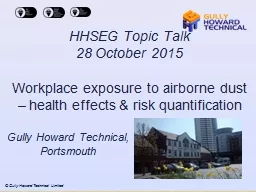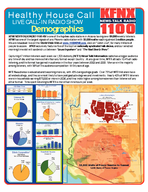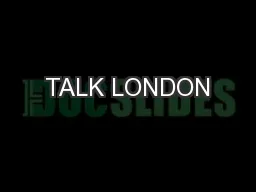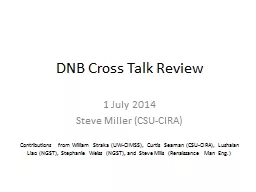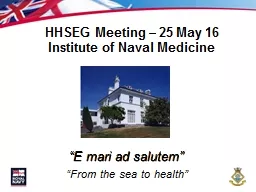PPT-HHSEG Topic Talk
Author : mitsue-stanley | Published Date : 2017-04-15
28 October 2015 Workplace exposure to airborne dust health effects amp risk quantification Gully Howard Technical Portsmouth In the UK there are 13000 deaths per
Presentation Embed Code
Download Presentation
Download Presentation The PPT/PDF document "HHSEG Topic Talk" is the property of its rightful owner. Permission is granted to download and print the materials on this website for personal, non-commercial use only, and to display it on your personal computer provided you do not modify the materials and that you retain all copyright notices contained in the materials. By downloading content from our website, you accept the terms of this agreement.
HHSEG Topic Talk: Transcript
Download Rules Of Document
"HHSEG Topic Talk"The content belongs to its owner. You may download and print it for personal use, without modification, and keep all copyright notices. By downloading, you agree to these terms.
Related Documents

